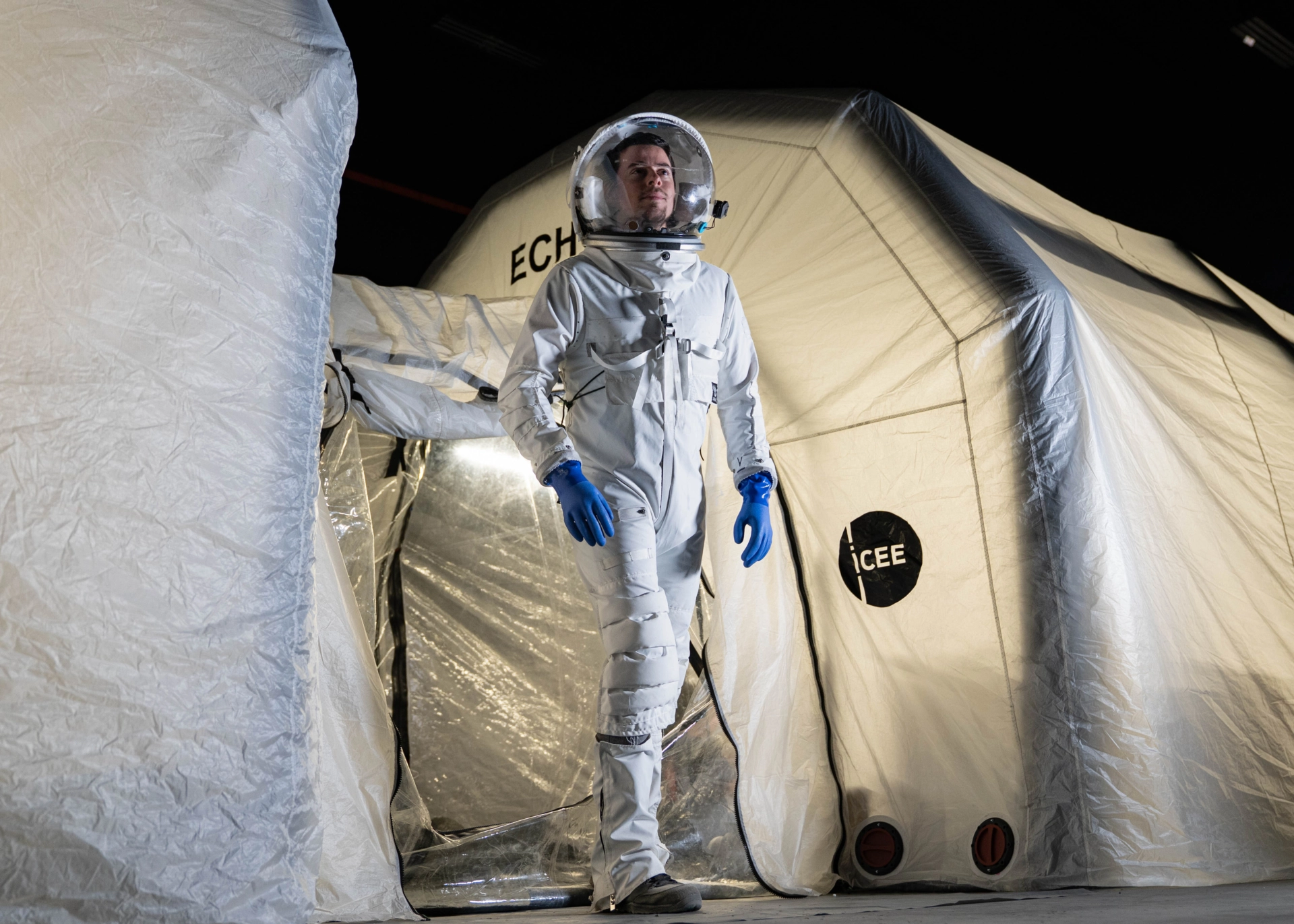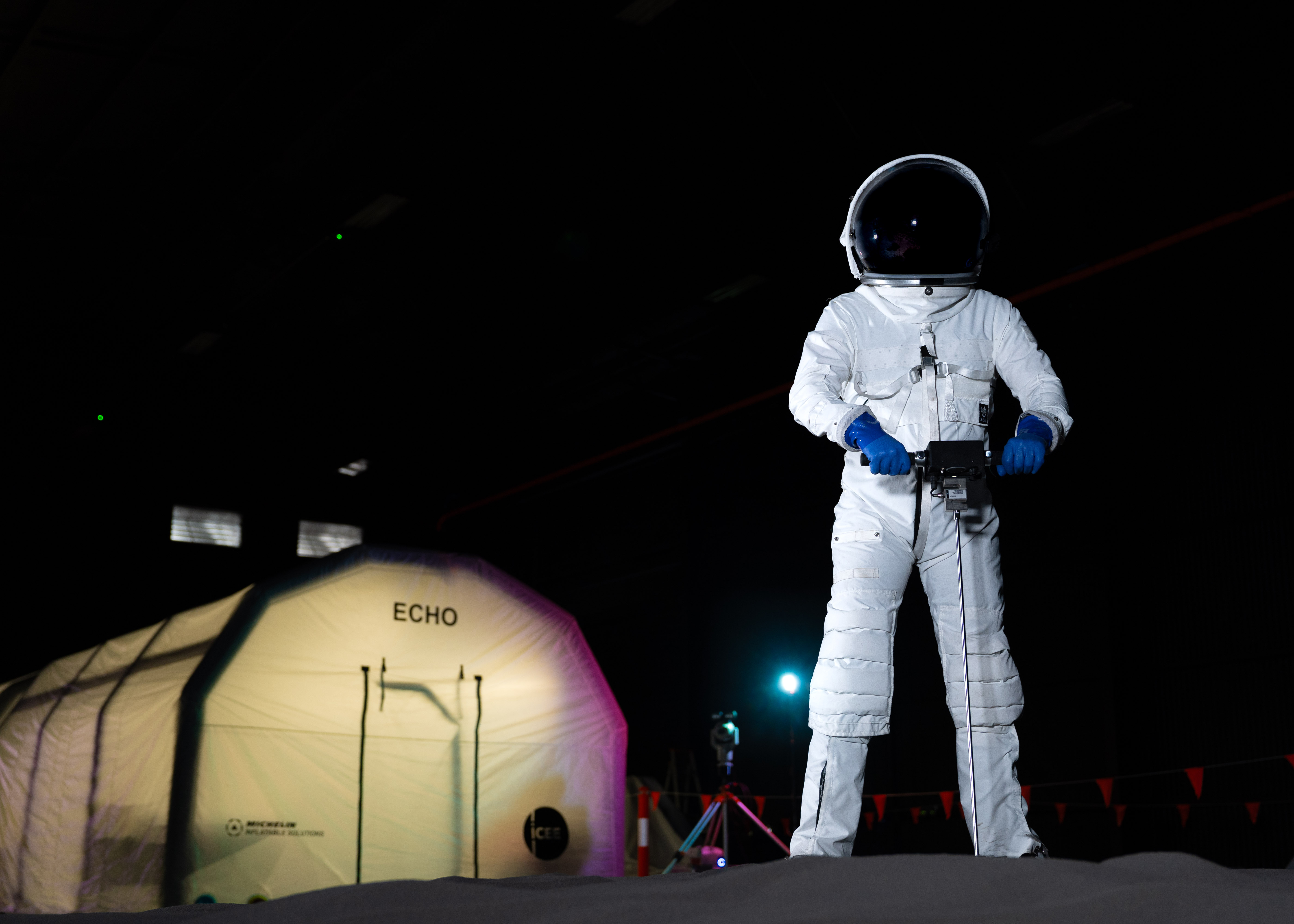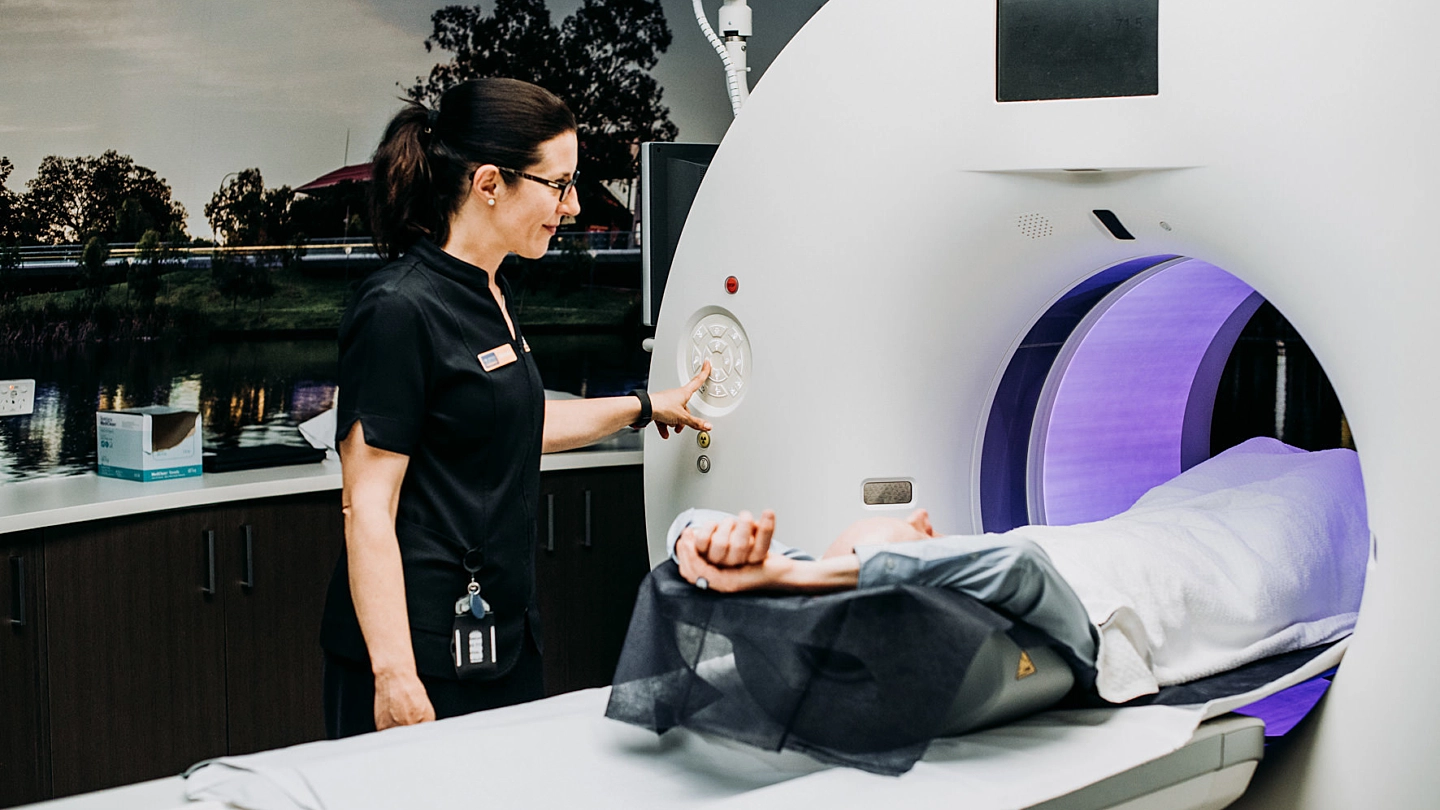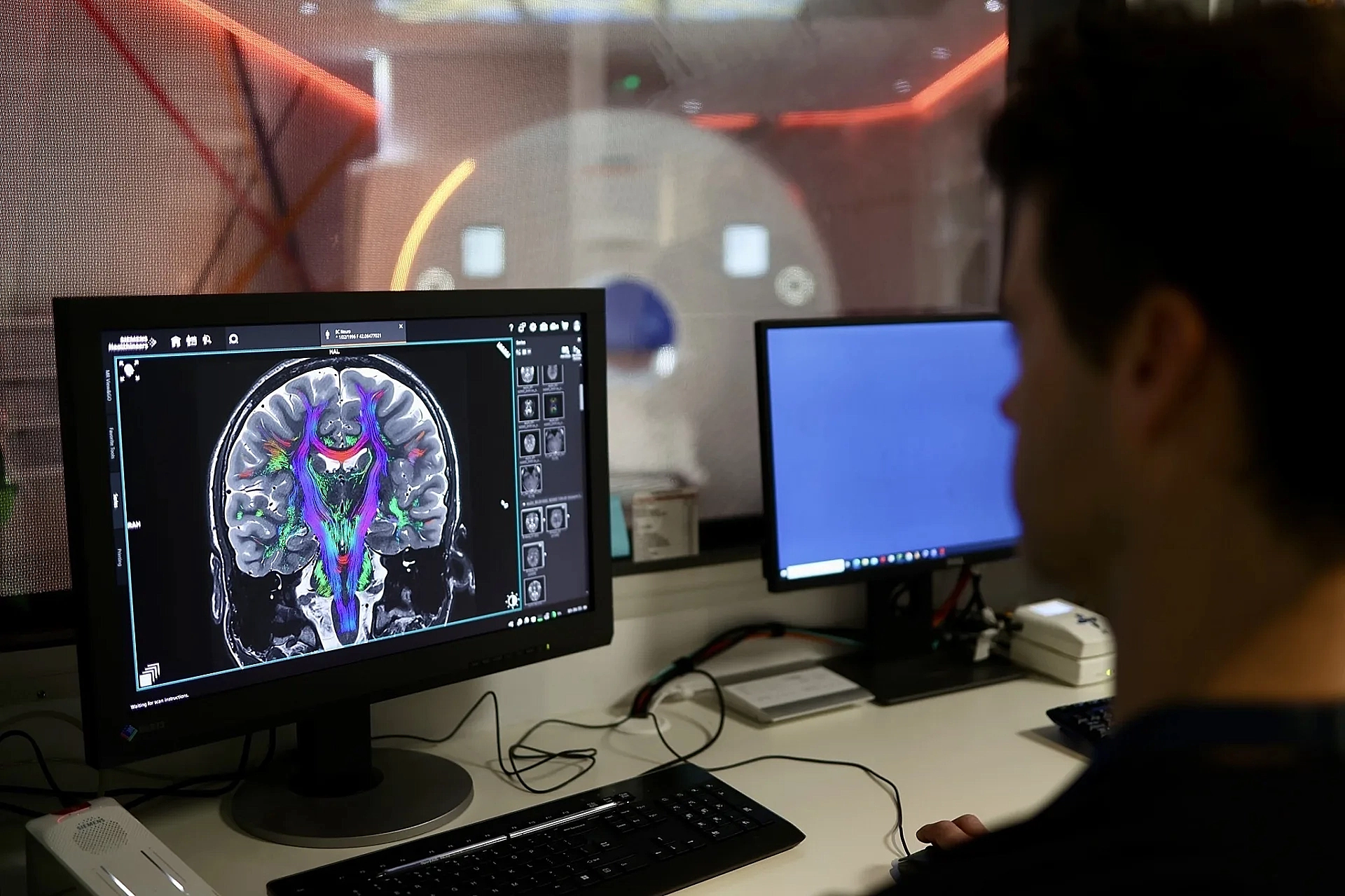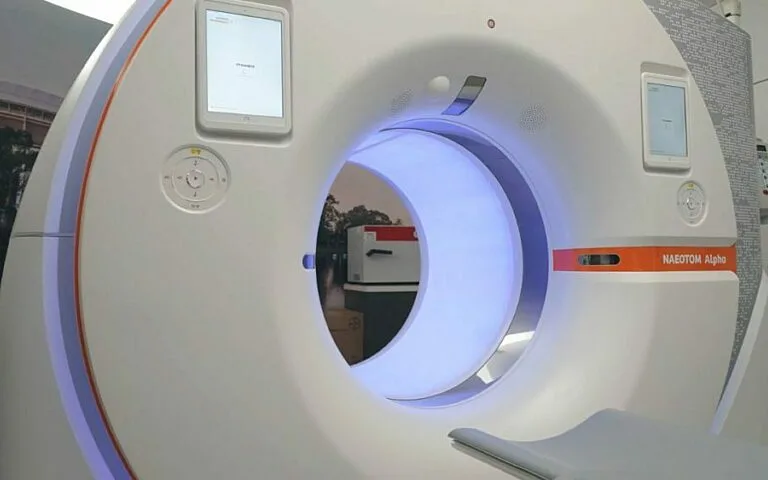The Clinical and Imaging Research Centre (CRIC) at SAHMRI has partnered with the University of Adelaide and international space testing, research, and development start-up ICEE.Space for a world-first ‘space' mission – without leaving the surface of the earth.
ICEE Space Co-Founder Charlotte Pouwels says this ‘analogue’ space mission is a earthbound simulation that tests sustainable mission systems, next-generation analogue spacesuits and habitats as well as performing lunar mission simulations and operational research.
“Research insights from Earth-based analogues help crews work more safely and productively in space,” she said.
“They also help prepare for future Moon and Mars-like analogues through research involving team dynamics, diagnosing and treating medical issues in space and investigating other critical factors for analogue space exploration, including simulating potential hazards.”
The CRIC at SAHMRI, in its role as South Australia’s node of the National Imaging Facility, performed Functional MRI (fMRI) scans on the analogue astronauts before and after their fortnight mission.
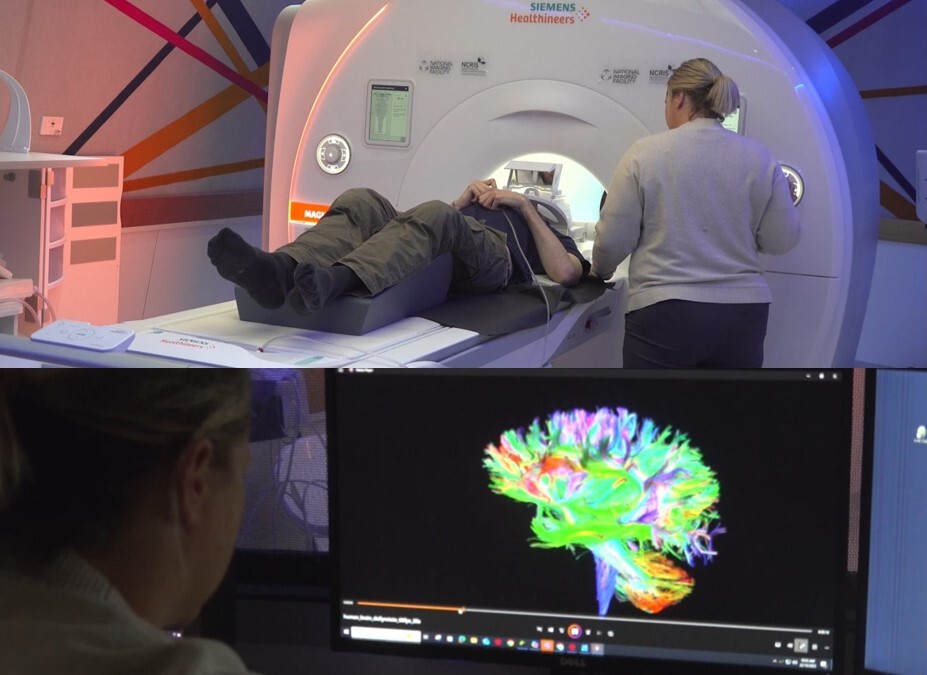
CRIC Clinical Director Dr Andrew Dwyer says he expects to see clear changes in the astronauts’ brain function networks.
“Brain function networks are a key part of how people adapt to different situations,” he said.
“In these missions, the analogue astronauts experience a range of different executive functions, emotions and time perception changes. Using fMRI we can map how those networks respond to different situations.”
The University of Adelaide’s Prof Anna Ma-Wyatt is an experimental psychologist and a specialist in behavioural neuroscience and vision science. She says isolation, confinement and sensory deprivation are significant factors astronauts must contend with during missions to space.
“The mission will contribute to our understanding of how the novel physical environment of space affects astronauts' mental and cognitive wellbeing and how we can mitigate the risks associated with long-term space exploration,” Prof Ma-Wyatt said.
The mission – officially known as ADAMA (Astronautical Demonstration of an Analogue Mission in Australia) – was manned by four analogue astronauts: Mission Commander Kato Claeys, Vice Commander Louis Burtz, Base Engineer & Medical Officer Adrian Eilingsfeld and Science Officer Ilija Hristovski.
The simulated moon environment was staged at the University’s Extraterrestrial Environmental Simulation (Exterres) Covered Regolith Analogue Terrain for Experimental Research (CRATER) facility, located at its Roseworthy campus.
“The University’s Exterres CRATER facility is a research testing environment that simulates conditions on the Moon including the unique lighting experienced during the course of a lunar day," said A/Prof John Culton, the Director of the Andy Thomas Centre for Space Resources (ATCSR) at the university of Adelaide.
CRIC is a partnership between SAHMRI and Jones Radiology delivering open access state-of-the-art imaging services for clinical and research purposes, connecting researchers through SAHMRI, local and global universities, our health sector and industry partners.
Images and vision in this story are published thanks to The University of Adelaide and Isaac Freeman.
